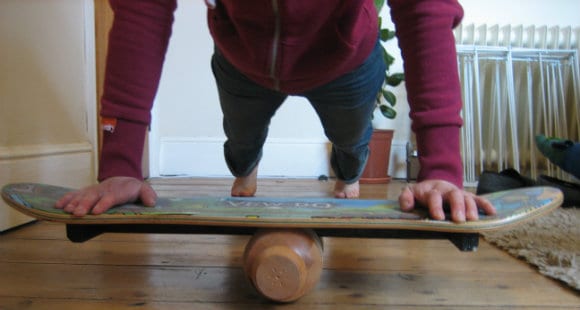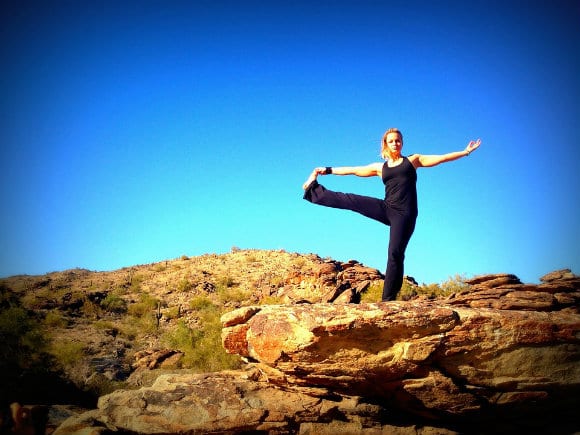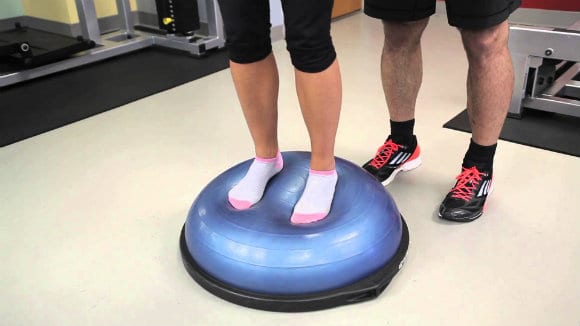Proprioceptive Exercises
Before we can go and analyze in detail which are the best proprioceptive exercises to perform, it is necessary to take a step back and therefore understand what proprioception is.
As is now known everywhere, proprioception means the ability to be able to perceive one's own body and its own muscle contraction, within a space, even without the aid of sight. Through this definition we realize how a high proprioceptive capacity is synonymous with a high and effective control of one's body.
Going even more specifically, we find that this particular ability is activated by particular proprioceptive receptors, inserted inside the nerve endings.
These receptors, through the bone marrow, forward the information to the brain, which in turn will re-elaborate it, giving responses relating to the movement of the body.
What are they for?
Nowadays, thanks to scientific research, it is possible to perform real training sessions dedicated entirely to proprioception.
These workouts they have their foundation on creating instability in the body, in order to evaluate the reaction capacity of the aforementioned receptors.
In the event that the responses are poor, and the subject demonstrates poor ability to know how to control and identify his own organism, it is possible to re-educate the system trying to improve the response to stimuli.

The result that a training of this kind brings is certainly effective in accident prevention as we learn to listen to our body more accurately, in recovery from trauma by ensuring the reactivation of an apparently "sleeping" area.
Thanks to these benefits, proprioceptive training can be combined with any sporting activity.
Being able to deduce what type of tools are used in theproprioceptive training, just think of the fact that everything is based on making the subject lose his balance.
There are tools of varying difficulty such as: tablets, bouncer, skymmi, bosu, trampolines, fitball, round and rectangular wooden boards, tennis balls, balls of various sizes, airex, resizer, ball tool, temix and much more.
The athlete will use all these tools according to his starting level, for a well-defined length of time and very often unilaterally, i.e. one (lower) limb at a time. It is also of fundamental importance to remember to perform all the exercises barefoot, without shoes. In fact, the latter tend to alter our posture, thus distorting the perception we have of our position.
Exercises
Now let's see which are the most used exercises.
1. Natural load exercises
They are a type of exercises based solely and exclusively on the use of our body. An example can be to balance on one foot, with a blindfold over the eyes without and maintain the position for a certain time.

The same exercise can be performed by making small hops on the spot, perhaps even inserting a small obstacle to be crossed like a stick.
2. Seated exercises with tablets
This type provides for the unloading of the body that is seated. From here the athlete will place both feet, or one foot at a time, on some tablets of various kinds.
At this point, he will have to make certain movements of the foot such as rotations, lateral movements, etc. in order to improve the sensitivity in that particular area.
Ideal for those who have to recover from a trauma suffered in the lower limbs.
3. Standing exercises with tablets
The aforementioned exercises then undergo a variation, that is are performed standing.
Various types of tablets are always used which will allow us to perform numerous movements such as a simple one isometric contraction keeping the balance on them, lunges of various kinds, leaps from everywhere and so on.

Initially for this kind of exercises it is useful to gain mastery first with the support of both feet, and only then one foot at a time.
Conclusions
We can therefore say with absolute certainty that these three types are the basis through which a wide range of exercises adapted to the needs of the individual are then created.
Much lies in the skill of the trainer, who must be able to always bring new stimuli and contents, never straining the subject's abilities, but by making it reach the progress established in a gradual and natural way.
It might seem obvious to say it, but the figure of the personal trainer, in these workouts more than ever, is fundamental.
The risk of incurring neuromuscular damage is very high if an exercise is performed incorrectly. Remember that the entire neuro / muscular system is thoroughly stimulated. Therefore, having at your side a prepared person, capable of knowing how to program what is best suited to the case of the subject in front of you, is the first element on which to rely.


























